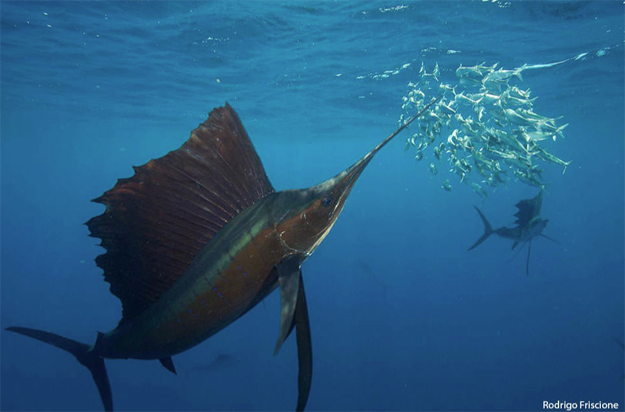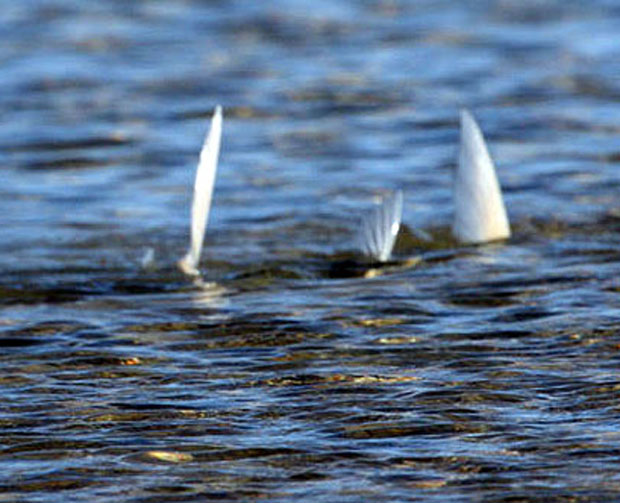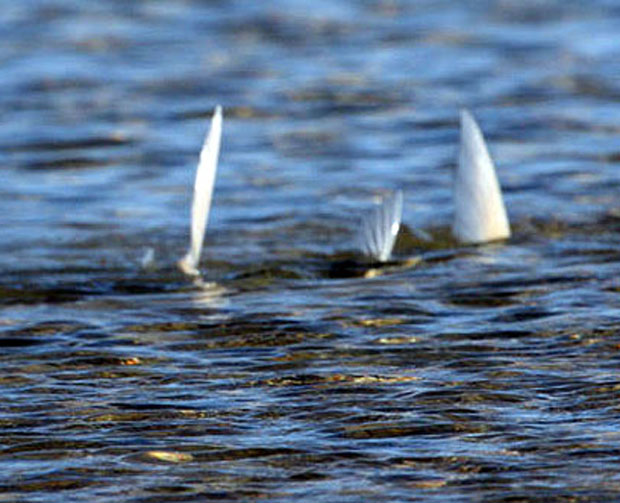The Fisherman’s Ocean / by David A. Ross, Ph.D / Stackpole Books / Excerpt
Eye structure, bonefish have adapted
[dropcap]T[/dropcap]he structure of a fish’s eye is similar to that of a human eye. One difference is that we have an adjustable iris or diaphragm that controls the amount of light that enters our eye and reaches the retina.
Most fish have fixed or only slightly adjustable irises and therefore cannot regulate the amount of incoming light that reaches their retinas.
Also, many fish either do not have eyelids or, if they do, have poorly developed ones. Without eyelids, the light intensity can be a problem for fish, as they cannot squint or adjust their irises to shut out or reduce strong light. Of course, fish can avoid strong light by going deeper, where light intensity is diminished. Also, some fish have special adaptations to their eyes that control incoming light. Sharks and a few species of bony fish have eyelids composed of fatty material.
Bonefish, for example, have a fatty tissue with a small opening over their pupils that restricts the amount of entering light. Many fish have pigments in their eyes that become active as light intensity increases; this pigment shades and protects the light-sensitive cells of the retina.
The absence of eyelids on fish has led to the erroneous conclusion that fish do not sleep
Without eyelids, the thinking goes, how can fish close their eyes? Fish actually may spend considerable time sleeping, or at least being in a quiet, energy-saving, resting state, just floating in the water. This behavior, however, is not thought to sleep in our sense of the word.
The eyes have it
Many types of schooling fish and most large fish, particularly predators, have large eyes. (Smaller or less distinct eyes are more common among fish that rarely or never school.)
Evidence shows that predators often key in on the eyes of prey, and apparently because of this many prey species have developed camouflage or various color schemes to hide their eyes. This point hasn’t been lost on anglers – successful flies have eyes of some sort, including those that imitate shrimp, crabs, crayfish, lobster, or other similar vertebrates, as well as small baitfish patterns.

Big sailfish, big eyes, and fastest fish in the ocean – Pacific sailfish hunting sardines in the open ocean off the coast of Mexico. Photo taken by Rodrigo Friscione / NOAA. A public domain image.
Summary
• As you might expect, fish that feed under low-light conditions, such as at dawn or dusk or in somewhat deep and dark water, usually have larger eyes than those fish that live in bright, shallow water.
• Fish that are not dependent on their vision for feeding usually have relatively small eyes, a group that includes bottom-feeders that use their other senses to find food.
• Fish that live in deep parts of the ocean, into which no light penetrates, either have no eyes or very small ones. Most of these fish have a well-developed lateral line system with which they can detect movement by other creatures.
• Deep-sea fish that do have eyes often have an amazing amount of sensory cells in their retinas – they have as many as 10,000 to 16,000 million cells per square inch. The sensitivity of the eyes of these fish exceeds that of any other animal.

Bonefish have adaptations that filter harmful glare. Image source University of Florida – Florida Museum of Natural History, Gainesville, Florida.
Source: Excerpt is from the book The Fisherman’s Ocean by David A. Ross, Ph.D. Reprinted with permission from Stackpole Books, Mechanicsburg, Pennsylvania.








